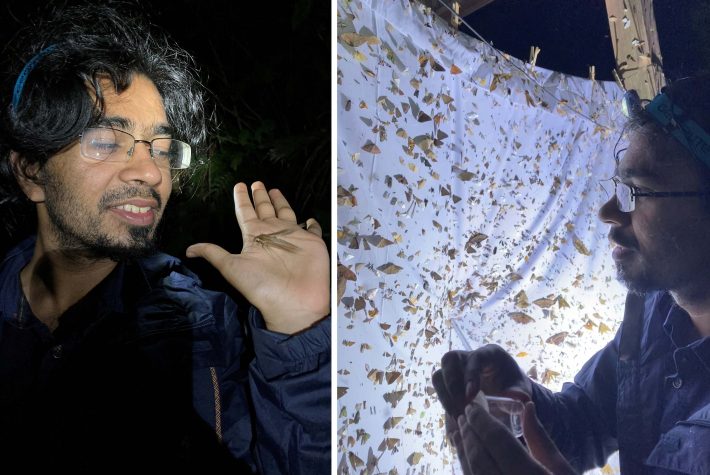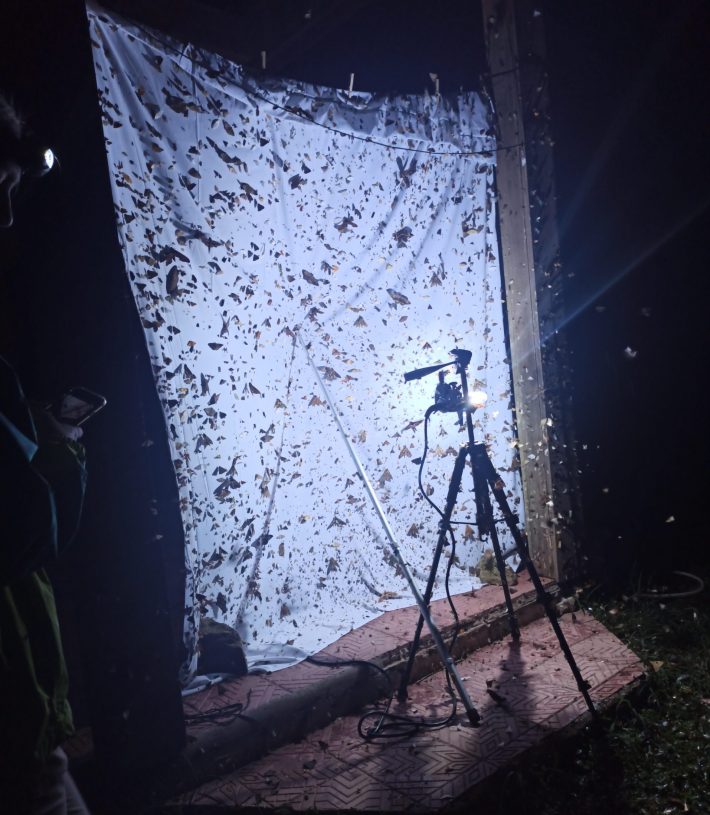Researchers develop portable sensor-packed tool for insect tracking
Florida International University.
Researchers develop a portable and affordable tool to accurately tracks insect movements. The research was published in Methods in Ecology and Evolutions

With some home security software and a little ingenuity, FIU biology Ph.D. student Yash Sondhi has developed a new tracking tool for hard-to-track insects.
Moths, mosquitos and fruit flies usually fly under our radar, and not much is known about when they are actually flying around. So Sondhi, in collaboration with researchers from the University of Florida and the Imperial College of London, has developed a portable and affordable tool that accurately tracks insect movements in the field by pinpointing what times of day or night small insects are awake and active.
This information is the foundation for understanding insect behaviours and circadian rhythms — patterns that determine when they look for food, reproduce, pollinate flowers and more. Without this basic information, it’s harder to predict or determine how changes in the environment, like an increase in light pollution, might impact the insects.
“You might think a moth is nocturnal because it’s only been seen at night, but that doesn’t mean it’s not out during the day. It just might not have been seen,” Sondhi, who works in FIU associate professor of biology Jamie Theobald’s lab, said. “We wanted to look past the standard nocturnal or diurnal categories that could be an oversimplification.”
Sondhi, who studies moths, needed a tool he could take to the field because the existing, bulky tools can only be used in a lab where it’s impossible to study natural insect behaviours.
But the tinier the animal, the harder it is to track. Plus, insects fly — and they can fly fast. Sondhi had to be inventive. He gathered a microcomputer, open-source motion tracking software, sensors, a camera and all-important infrared lights that don’t disturb or confuse insects. He housed all of this in a mesh cage that looks like a laundry hamper and the portable locomotion activity monitor was born.
It can be built for under $100, a tiny fraction of the lab-based technology that costs more than $4,000.

After some testing in the lab, Sondhi tested the tool on a research trip to Costa Rica with Akito Kawahara from the University of Florida. They collected 15 species, placing between four and eight moths from each species into the activity monitors.
Sondhi says one of the most interesting examples was a species of tiger moth. It’s assumed these brightly coloured, toxic moths are exclusively out during the day, because predators steer clear of them and they can move about without fear of being eaten. However, data from the activity monitors revealed they’re also active at dusk. After all, they have to escape other predators who come out at nightfall, like bats.
“It was so cool to see the different activity patterns,” Sondhi said. “Not everything is as black and white as we think. Now, we can predict and better understand what’s driving when insects fly. The goal is to quantify when they are active and then associate that with their traits — for example, if a moth is dull-coloured, beige, does that mean it’s strictly nocturnal?”
Sondhi also tested the tool and found that it is applicable for all small insects. He collaborated closely with FIU biologist Matthew DeGennaro’s lab, and the tool accurately tracked the movement of mosquitos.
“This is going to allow us to study mosquito populations in their natural habitats, instead of relying on laboratory strains that might not necessarily represent wild mosquitoes,” Elina Barredo, a Ph.D. in DeGennaro’s lab, said. “We can also run tests to understand how different species respond to variables such as light level and the presence of a food source — and address the effects of light pollution in mosquito feeding and overall daily activity.”
This year, Sondhi will be using this new tool to continue his National Geographic-funded research on how moths respond to light pollution. He’s collected the data on the differing light levels at several different field sites in India. Now, he can examine how light pollution could be confusing moths, interfering with their natural circadian patterns, and impacting when they are active.
You can read the full research article here:
, , , , , , , , , , , & (2022). Portable locomotion activity monitor (pLAM): A cost-effective setup for robust activity tracking in small animals. Methods in Ecology and Evolution, 00, 1– 8. https://doi.org/10.1111/2041-210X.13809
Like what we stand for?
Support our mission and help develop the next generation of ecologists by donating to the British Ecological Society.